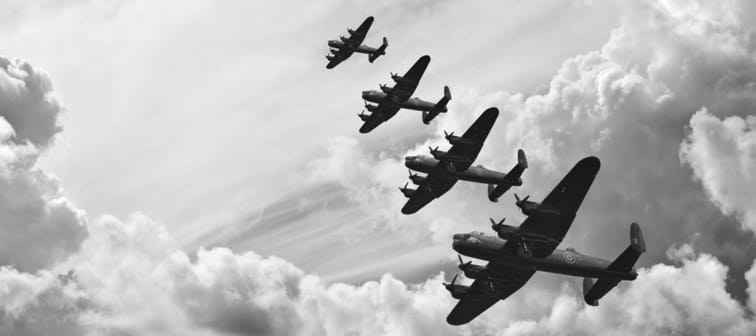You probably know all of that from school or the History channel. But there's much more you probably never learned — including the war's effects on the stock market, women's wages and Hollywood budgets.
Take a look at these 18 fascinating financial facts about WWII.
1. It was America's costliest war ever
America's final bill for the fighting in the Pacific and Europe was massive. Adjusting for inflation, World War II cost over $4.1 trillion, according to 2010 figures from the Congressional Research Service.
That's roughly equal to the value of Apple and Amazon combined.
How does that compare to the cost of modern wars? A Pentagon report says the U.S. spent "only" $1.5 trillion on America's longest war, the war in Afghanistan, plus related anti-terror campaigns in Iraq and Syria.
This 2 minute move could knock $500/year off your car insurance in 2025
OfficialCarInsurance.com lets you compare quotes from trusted brands, such as Progressive, Allstate and GEICO to make sure you're getting the best deal.
You can switch to a more affordable auto insurance option in 2 minutes by providing some information about yourself and your vehicle and choosing from their tailor-made results. Find offers as low as $29 a month.
Find the best rate for you2. The war was good for Wall St.

The Japanese attack on Pearl Harbor on Dec. 7, 1941, prolonged a Wall Street funk that had begun with the notorious stock market crash of 1929.
The Dow Jones industrial average went into a downward spiral, and by late April 1942 it was at its lowest level since 1934. But then things began to turn around.
Investor's Business Daily speculates investors came to the conclusion that the U.S. would win the war. Bullishness carried the Dow up 130% over the next four years.
3. Taxes were raised to all-time highs
To help finance the war, U.S. income taxes were raised to the highest levels in history.
For 1944 and 1945, income amounts above $200,000 — about $3.3 million in today's dollars — were taxed at an astounding marginal tax rate of 94%! After the war, that top rate was brought down to 91%.
Today, the top marginal income tax rate is 37%. It had been 39.6% but was cut to the current level by the December 2017 tax law.
Kiss your credit card debt goodbye
Millions of Americans are struggling to crawl out of debt in the face of record-high interest rates. A personal loan offers lower interest rates and fixed payments, making it a smart choice to consolidate high-interest credit card debt. It helps save money, simplifies payments, and accelerates debt payoff. Credible is a free online service that shows you the best lending options to pay off your credit card debt fast — and save a ton in interest.
Explore better rates4. Soldier pay soared after Pearl Harbor

Heading into World War II, the military was not a career choice that paid well. Before the Pearl Harbor attack in late 1941, privates earned $21 per month. In today's money, that works out to a salary of about $5,000 a year.
But in September 1942, the pay rate for a private more than doubled, to $50 a month. Because the U.S. was still emerging from the Depression, that was better than what many civilian professional men were making.
The comparatively high military pay was necessary to draw a large percentage of the male population into the war effort.
5. The US military budget grew 30 times bigger
U.S. military spending surged over the course of the war.
The annual defense budget rose from $1.9 billion in 1940 to $59.8 billion by 1945, according to Mitchell Bard in The Complete Idiot's Guide to World War II.
In 1943, the U.S. spent more than one and a half times on defense than Germany did, and more than 10 times what Japan was spending.
6. Metals shortages hit the Mint ...
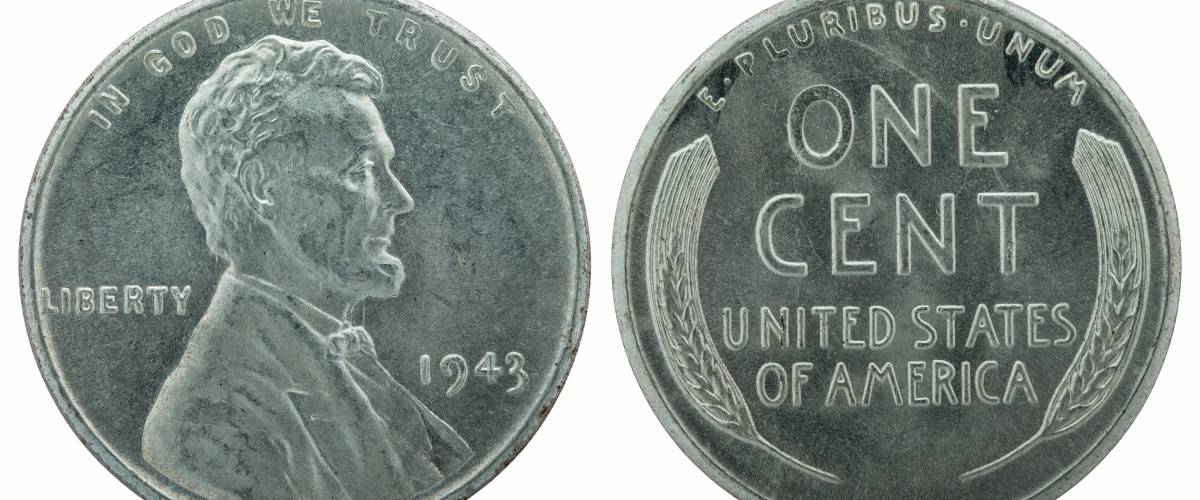
The U.S. military needed lots of metal, to build tanks, planes, ships, guns and even tins for soldiers' food rations. Metals shortages prompted people on the homefront to collect old pots, pans, cans and various scrap metal for recycling.
As copper became scarce, the U.S. Mint made its 1943 Lincoln pennies out of steel coated with zinc. They're the only Lincoln cents that look silver, instead of the familiar reddish color.
A few copper pennies were produced by mistake in 1943. So, check your change — if you've got one of those, the average value is about $60,000, says CoinTrackers.com. A 1943 copper penny in mint condition could be worth close to $86,000.
7. ... and the Oscars
Academy Award statuettes are typically bronze, with 24-karat gold plating. But with metals in short supply during World War II, Oscars were made of mere painted plaster for three years.
Stars who got "plastered" on Oscar night in the mid-1940s included James Cagney, who won Best Actor for Yankee Doodle Dandy, and Ingrid Bergman, named Best Actress for Gaslight.
After the war, the Academy allowed the winners to swap out their plaster prizes for the usual gold-plated metal ones.
8. The president's pay was worth less and less

The U.S. president's salary remained steady before and after the war, at $75,000. That had been the pay rate for the nation's chief executive since 1909.
Amid World War II inflation, the presidential salary lost a lot of financial ground. By 1947, the buying power of that $75,000 a year was down by more than a third compared to 1940.
Harry Truman was the president who finally got a pay raise, to $100,000 in 1949. Today, President Joe Biden is paid $400,000 a year, the presidential salary since 2001.
9. Inflation was worse than today
Back in 1942, in the months after Pearl Harbor, defense spending drove up demand and caused inflation to surge at an annual rate of nearly 13%.
The government responded by putting some price controls into place.
Then, when the controls were lifted following the war in 1946, inflation made a big comeback.
From March 1946 until March of the following year, prices skyrocketed more than 20%. That thing that cost $10? It went up to $12.
10. Inflation was even worse elsewhere

America's postwar inflation was nothing compared to Hungary's hyperinflation — some of the worst the world has ever seen.
From August 1945 through July 1946, the Hungarian pengő lost value at a dizzying pace as prices rose as fast as 207% per day. Costs in Hungary doubled every 15 hours.
What sent prices into the stratosphere? Hungary — which had been allied with Nazi Germany — felt forced to print more money to pay postwar bills, including $200 million in reparations to the Soviet Union.
11. More women entered the workforce, but ...
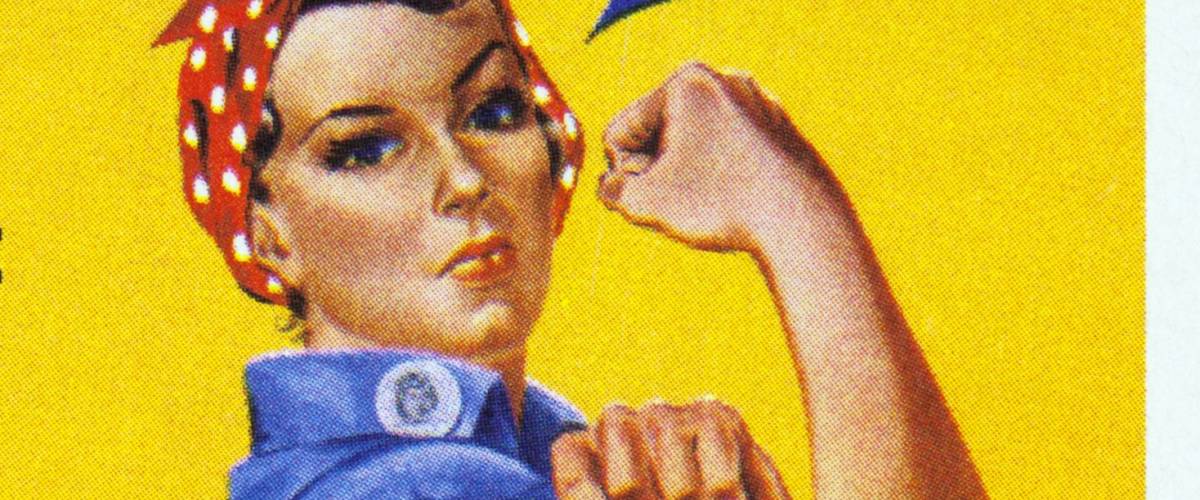
As many of America's able-bodied men went to the battlefronts, women were given jobs doing factory work at home.
But while that iconic image of Rosie the Riveter has come to represent the working woman of the 1940s, women occupied just 4% of the nation's skilled jobs — including doing welding at defense plants — during the height of the war.
Those women were paid an average of about $31 a week. Their male counterparts in the skilled workforce made a weekly wage of around $55.
12. Hollywood didn't totally embrace penny pinching
Amid wartime cutbacks and rationing, the government ordered Hollywood to rein in its spending on set building, a major component of a film's budget.
Studios could spend no more $5,000 per film on set design materials. They also had to curtail their filming after dark, because of nightly air-raid blackouts.
But the belt-tightening didn't extend to stars' salaries. Congress rejected a proposal to limit wartime pay to $25,000 a year — to the relief of scores of people in the movie business earning $100,000 a year or more.
13. FDR may have been forced to use a gangster car

President Franklin D. Roosevelt ushered the nation into the war and encouraged Americans to conserve resources to support the cause.
A law at the time prohibited the government from spending more than $750 (equivalent to about $15,000 today) on any one automobile — even a secure ride for the president.
So, reportedly, FDR was required to ride around in a used car: the government-confiscated bulletproof limo that had belonged to gangster Al Capone. However, some experts say this is a myth. They say the Capone car was in England at the time.
14. The most valuable WWII collectible?
A car that carried Adolf Hitler in parades in Nazi Germany is thought to be the most expensive piece of memorabilia from World War II. But the value of the Mercedes-Benz 770K Grosser is debatable.
Hitler's armored 1939 convertible was up for auction in Scottsdale, Arizona, in January 2018 and was expected to bring up to $10 million. But it attracted a high bid of just $7 million, which fell short of the minimum price.
If the owner wants to try again through a different selling platform, eBay is not an option. It banned the sale of Nazi items in 2001.
15. The Pentagon got built at a skyrocketing cost

When the Pearl Harbor attack occurred, the U.S. was already building the Pentagon, a massive headquarters for military operations just across the Potomac River from Washington, D.C.
The initial $35 million budget jumped to $75 million by the time the building opened in 1943.
Though Roosevelt at one time wanted to limit the size of the Pentagon to 2.25 million square feet, the imposing complex now includes more than 6 million square feet of floor space.
16. The cost of the atomic bombs was astounding
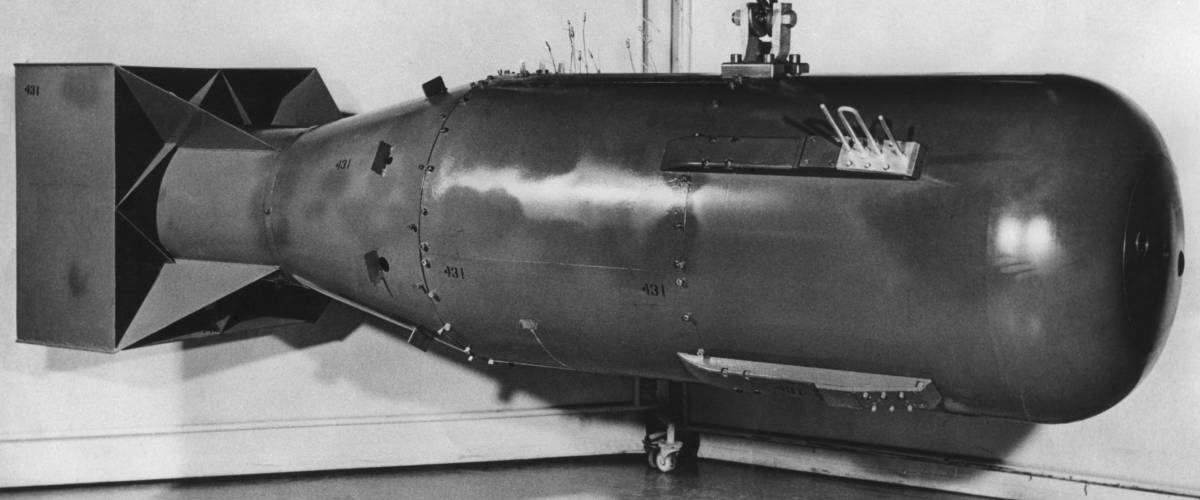
In 1945, the war ended after the U.S. dropped atomic bombs on the Japanese cities of Hiroshima and Nagasaki. The bombs were the result of the top-secret Manhattan Project, a research operation conducted in New Mexico.
The Manhattan Project produced a total of four bombs, at a cost of $500 million each, or $2 billion total.
That was a lot of money for the time, the equivalent of about $33 billion today.
17. A tailor shop hid $2.5M in WWII treasure
During the war, people in Europe hid cash and valuables to keep them from falling into the wrong hands. Now, three quarters of a century later, treasure hunters still stumble upon caches of gold, coins and bills.
Recently, construction workers who looked under the rotting floor boards of an old tailor shop in England came across World War II-era bank notes totaling 30,000 British pounds — over $2.5 million today, when adjusted for inflation.
The shop had been a favorite of Britain's wartime Prime Minister Winston Churchill. But the current shopkeeper says the money may have been stashed there by bank robbers, the New York Post reported.
18. Gasoline was rationed — but not to save fuel
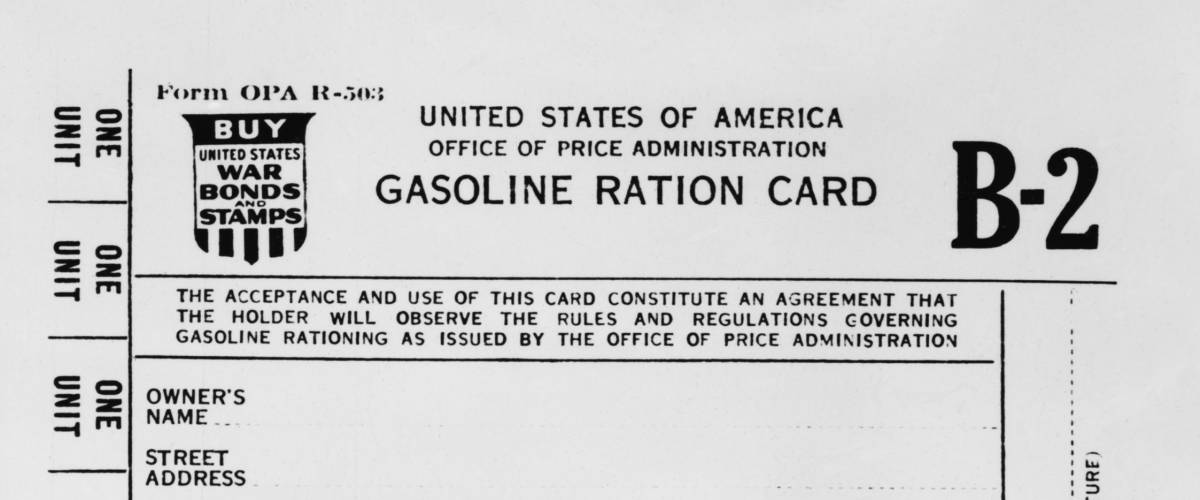
Prices for gasoline during World War II were similar to today's, when you consider inflation. In 1942, U.S. motorists paid an average of about 20 cents a gallon, which works out to about $3.64 a gallon in 2022 dollars.
But it was still a challenge for American families to fill up during the war, even if gas prices weren't an issue. That's because FDR enacted gas rationing, limiting some drivers to just three gallons per week.
The goal wasn't conserving fuel for the war effort, but to save rubber, which was needed for tanks, battleships and more. So, the idea was to help meet the military's need for rubber by getting civilians to use less of it, by putting fewer miles on their tires.
The richest 1% use an advisor. Do you?
Wealthy people know that having money is not the same as being good with money. Advisor.com can help you shape your financial future and connect with expert guidance . A trusted advisor helps you make smart choices about investments, retirement savings, and tax planning.
Try it now